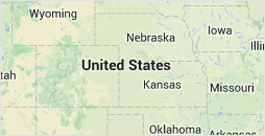Emily Clarke
PHONE NUMBER : -----
Map

3 Regulatory Standards You Must Follow in The Oil and Gas Industry
The oil and gas industry is one of the most regulated sectors globally due to its significant impact on the environment, economies and public health. Companies operating within this field must adhere to a myriad of regulations to ensure safety, environmental protection and compliance. Among these, three key regulatory standards stand out for their critical importance.
1. Environmental Protection Agency (EPA) Regulations
The EPA enforces numerous regulations aimed at minimizing the environmental footprint of oil and gas operations. These include standards for air quality, water pollution and waste management. One critical area under EPA's jurisdiction is the control of emissions of hazardous substances, such as sulfur dioxide (SO2) and volatile organic compounds (VOCs). Companies must implement measures to limit these emissions, often through advanced technologies and operational practices. Understanding what is MRV (Monitoring, Reporting and Verification) is crucial in this context, as it is a framework used to quantify and report emissions accurately.
2. Occupational Safety and Health Administration (OSHA) Standards
OSHA standards are designed to ensure the safety and health of workers in the oil and gas industry. These regulations cover a wide range of topics, from hazardous material handling to workplace safety practices. One of the most hazardous elements workers can encounter is hydrogen sulfide (H2S), a toxic gas frequently found in oil and gas extraction sites. Adhering to OSHA guidelines helps in mitigating risks associated with H2S exposure, ensuring a safer working environment.
3. BSEE Regulations
The Bureau of Safety and Environmental Enforcement (BSEE) plays a pivotal role in the offshore sector of the oil and gas industry. BSEE regulations focus on the safe operation of offshore rigs and platforms, environmental compliance and emergency response. These standards are vital for preventing accidents and oil spills, which can have catastrophic environmental and economic consequences.
In conclusion, navigating the complex regulatory landscape of the oil and gas industry is essential for companies to operate successfully and responsibly. Compliance with EPA, OSHA and BSEE regulations not only protects the environment and workers but also safeguards the company's reputation and financial standing. Understanding what is MRV and the implications of H2S exposure is just the beginning; continuous compliance and improvement are key to thriving in this heavily regulated industry.
Author Resource:-
Emily Clarke is providing info about a single platform for your oil and gas software solutions. You can find her thoughts at gas trading software blog.
